VET APPROVED

The information is current and up-to-date in accordance with the latest veterinarian research.
Learn more »Unfortunately, cats are notorious for seeing things shaped like shoelaces or strings of yarn and attacking. This is normal when it is a toy, but when they’re trying to play with wires and cords it’s probably a good idea to cat-proof them. Keep your cat safe from a horrible zap of electricity that can harm them and keep your wires intact with these six tips and tricks.

The 6 Tips to Cat-Proof Wires & Cords
1. Plastic Tubing or Wraps
There are a few options for covering wires and cords that include wrapping them in a less harmful material. You can either buy or make plastic wrap around the cords that creates a barrier between your cat’s mouth and the wires. They usually look like old landline phone wires where they don’t completely cover the wire. There are grooves in between for easy adjustment or removal.

2. Velcro Cover
Like plastic covering, you can step up the cat-proofing by using Velcro. This material is thicker and uses a stronger attachment to keep it together. Velcro covers have a type of fabric on the outside that keeps your cat from getting to wires and cords. This is a great and secure option for covering live wires from your cats. It won’t rip or budge either!
3. Sprays That Deter Cats
With this method, you can use sprays that are made using scents that cats hate, such as citrus or others. The spray shouldn’t be used directly on the wires and cords, but you can use it around the general area to keep cats away. It will make cats avoid the area altogether and both your cats and wires will be safe from damage. It might take a little time for them to stop visiting the area, and you might find yourself trying out different scents and brands until you find which one works the best.
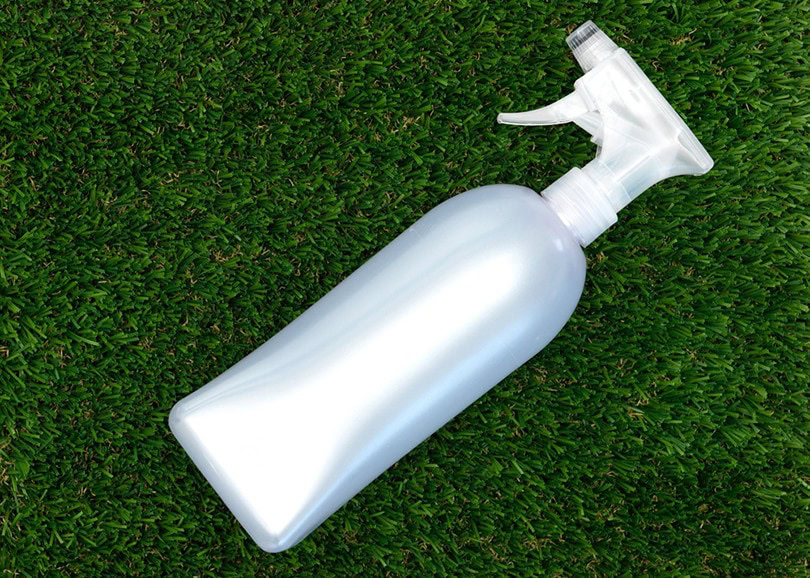
4. Create Barriers from Areas With Cords
A simple solution to cat-proof areas with wires and cords would be to block the area off from your cats. Now, this might be a little bit tough to do because we all know cats are feisty, curious, and will take the risk of jumping over a fence. If you can somehow get them to follow the rules, try blocking the area off with a piece of furniture, a curtain, or grab yourself a baby gate!
5. Reduce Accessible Cords
Another simple solution to keeping wires and cords inaccessible to your cats is by moving them to a better spot. This includes putting them behind couches or large appliances, and generally keeping them out of sight. If you let cords and wires dangle in front of your cat, they’ll be more tempted to play with them, but if your cat can’t see them, he won’t really know the difference.
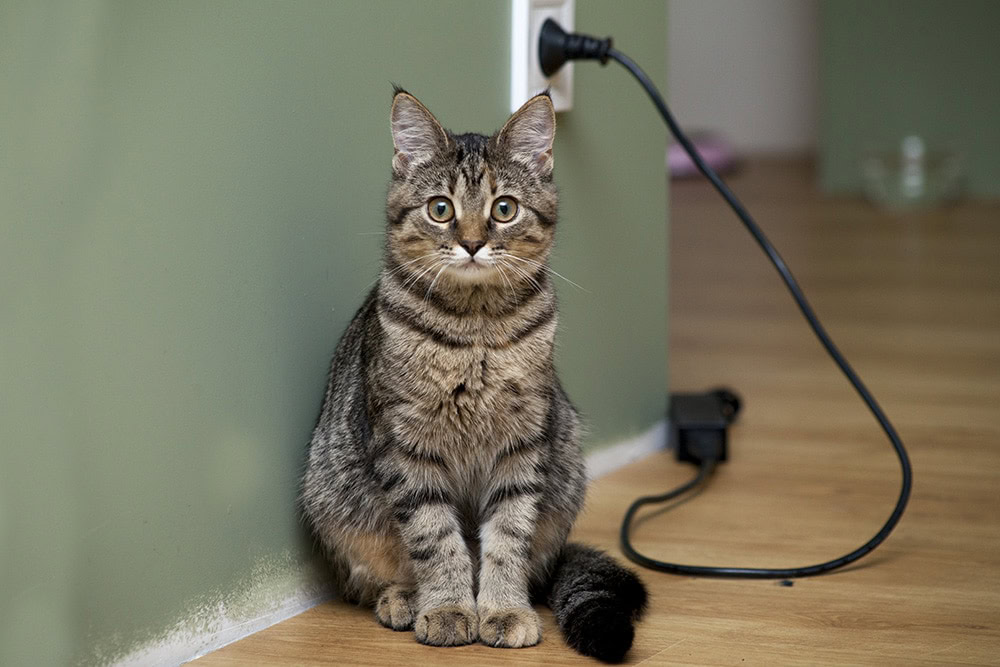
6. Put Them Away
The simplest solution for cat proofing your wires and cords would be to just put them away. Of course, this doesn’t apply to those that need to stay plugged in like your TV or dishwasher, but if it’s something like a phone or computer charger, put it away in a drawer. When you’re done using cords and wires, keep them tucked away so your cats can’t get to them.
 Additional Tips for Hiding Wires and Cords
Additional Tips for Hiding Wires and Cords
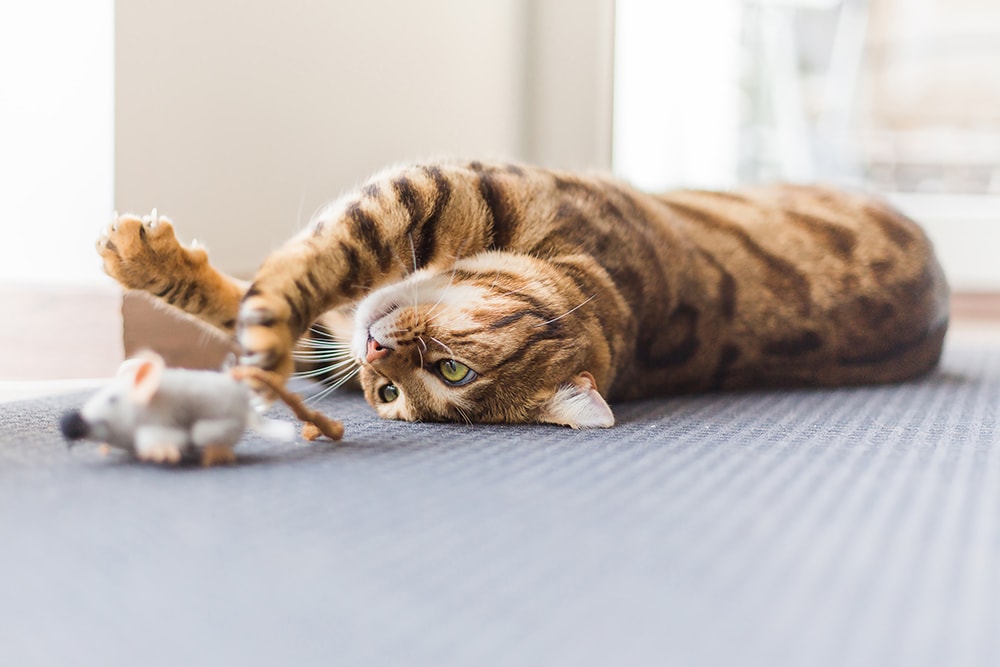
In addition to making changes to your home and covering the wires and cords using different options, there are a few additional things you can do.
These tips include unplugging wires when you leave your cats alone. If you’re leaving your home for the day or for an extended period, it’s a good idea to unplug wires and cords from the walls. The damage that chewing on live wires can do to your cats is serious.
Remove hazards from your home as well. This refers to keeping wires away from water, tucking them away from enticing spots like hanging over a table, and making sure when you move things around that there aren’t any wires dangling.
Keep toys around for cats that like wires. They need to stay engaged and have alternatives for chewing on wires. This can include toys shaped like strings, cat toys that dangle off sticks or cat castles, and even cat grass.
 Final Thoughts
Final Thoughts
It’s important to keep your cat’s safety in mind. Think about areas where there are wires and cords around and see if there are any safer options. Keep them away from places your cats visit throughout the day like their food and water bowl, don’t leave them hanging over furniture, hide them if possible, and try using plastic covering.
It’s easy to cat-proof your home from wires and cords with a few simple methods. Make sure your cat knows they can have fun with their real toys. Use furniture to hide cords by easily tucking them away or pushing appliances closer to the wall.
Your cat will thank you when they aren’t getting hurt, and you won’t spend countless dollars on new cords.
- See also: Can Cats Detect Electricity?
Featured Image Credit: Yavdat, Shutterstock
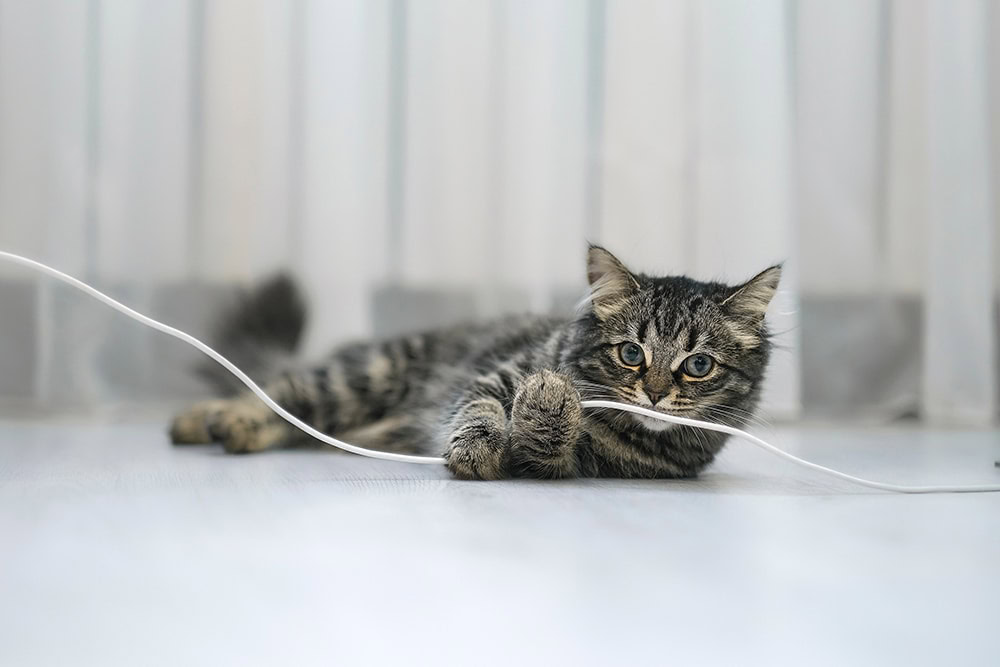






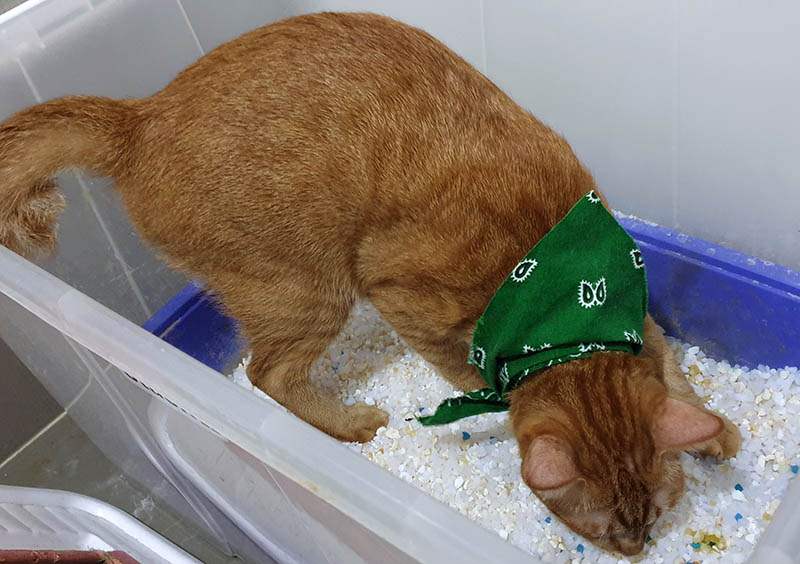




2 Responses
If items have to be plugged in, what can you do to safely cover the wires at the base where plastic tubing or things like velcro, with straight edges cannot completely cover them?
Hello,
thank you for your question. The base of the wire is usually reinforced with thicker layer of rubber so it should be harder for your cat to chew through. However, to be safe, you can try to use some natural or commercial deterrents, more on this here:
– How to Keep Cats Away from Certain Areas: 10 Proven Methods
Another option is using sockets that are hardly accessible to cats, or some physical deterrents such as aluminum foil, or maybe covering the socket with a box just allowing cords to come out of it and covering these with plastic tubing.
Hope this helps!